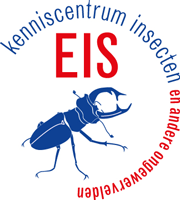| Vestigingsstatus |
Gevestigd |
|
| Zeldzaamheid |
Lokaal |
|
| Invasiviteit |
Invasief |
|
| Invasiviteit (toelichting) |
This spider was probably introduced to the Netherlands into greenhouses with vegetables or with planting material. In 2001 and 2002, it turned up in natural floodplains, indicating that it can survive and reproduce outdoors in natural aereas. |
|
| Type introductie |
Niet opzettelijk |
|
| Jaar van eerste introductie |
1984 - 1994 |
|
| Jaar van eerste melding |
1994 |
|
| Natuurlijke verspreiding |
Noord-Amerika |
|
| Verspreiding in Nederland |
Gelderland |
|
Zuid-Holland |
|
| Verspreiding in Nederland (toelichting) |
Has been found in greenhouses and in natural riverine areas. Due to its small size and the few people that study spiders, the species is probably more widerspread than currently known. |
|
| Habitats |
Oeverzones |
|
Kassen of composthopen |
|
Onder menselijk beheer |
|
| Wijze van introductie |
Verontreinigd kwekerijmateriaal |
|
Contaminant voedsel |
|
Transport van habitatmateriaal (grond, vegetatie, hout) |
|
Container/bulk, inclusief zee-, lucht- en treinvracht |
|
| Impact |
Predatie |
|
| Ecologische impact (toelichting) |
Is a new predator and thus has impact on prey species and is a competitor to other predators (spiders), also in natural areas. |
|
| Economische impact (toelichting) |
In greenhouses, this might be a welcomed spider, because it eats plant pests. |
|

